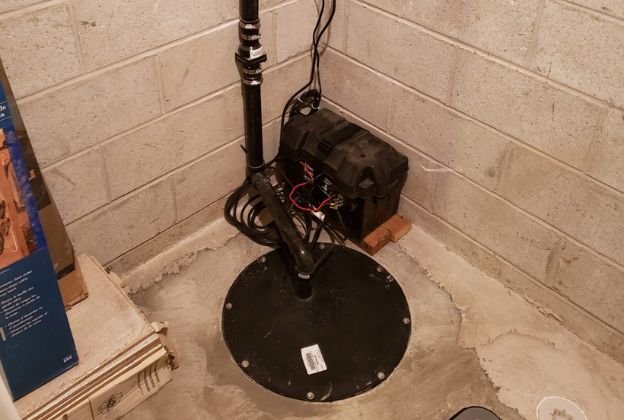

Sump Pump Installation Toronto
The installation of a sump pump can be one of the most important things you can do to prevent and control basement flooding, especially in situations where basement flooding is regular and becoming problematic.
One common need for a sump pump is if your basement is below the water table, which can cause leeching of water into your home during stormy weather. In this situation, a pump can be a much-needed solution to cure your flooding problems. Contact us for a free consultation where we can answer your questions about the installation of a sump pump.
A Sump Pump Solves Basement Flooding
Installing a sump pump can be a major help if you are experiencing problems with flooding, however, it does not necessarily deal with the entire problem. For instance, if you regularly experience basement flooding there may be other methods to solve your problem such as installing a backwater valve, or sometimes all it takes is a professional drain cleaning service to solve the problem.
Sump Pit Installation
Sump pit installation will be the first step to installing a sump pump. We will need to dig a hole in the lowest spot of your basement floor or wherever water accumulates regularly. During the installation of the sump pit, it is important that we do not jeopardize the basement foundation, so typically a sump bin will be at least 10″ away from the interior basement walls.
Once this hole has been dug out we will install a sump pit or sump basin as they are sometimes referred to. The sump pit is a large plastic bin that will allow for the accumulation of water and houses the sump pump.
What is a sump pump, and how does it work?
The type of sump pump Toronto residents usually have is a submersible pump that sits inside of the sump pit and is at the heart of the sump drainage system. There are three main components comprise a sump pump drain system – the sump pump, the sump pit, and the sump discharge pipe.
As the water levels rise, the sump pit will be the first to fill with water as it is connected to the weeping tile system that usually runs the perimeter of the home. As the groundwater level rises the sump pit will fill with water, if you are using an automatic pump (virtually everyone is these days) the pump will be activated and begin to pump the water outside of your property through the discharge pipe – away from your basements foundation. Once the water level recedes the pump will deactivate automatically.
Backup Sump Pump Installation
During thunderstorms, when you need your pump the most, there is often the risk of a power outage. To prevent flooding from the shutdown of your pump, we can install a sump pump battery backup. A backup sump pump will ensure that your basement does not flood. Installation of a sump pump with a backup battery can make a huge difference between a flooded basement and a dry one.
Backup sump pumps are often simply secondary sump pumps that continue to operate even when the main sump pump malfunctions or shuts down due to electricity outage. Due to power outages being a common issue, backup sump pumps are using alternative sources of energy:
A battery-powered sump pump is using a deep cycle battery to continue working during a power outage.
A water-powered sump pump is using the water pressure in the waterline to propel the pump and does not require electricity at all.
Sewage Ejector Pump Installation
The sole purpose of the sewage ejector pump is to move solids and liquids to the proper drainage system. This is particularly necessary with basement toilet facilities and laundry appliance installations. Sometimes it is impossible to install proper drainage simply because the main drain is higher than these systems. Without gravity to work in our favour we must install pumps to move the waste to where it needs to go. This is where a sewage pump will come in handy; it will pump the wastewater to the appropriate drain, ensuring proper function of these fixtures.